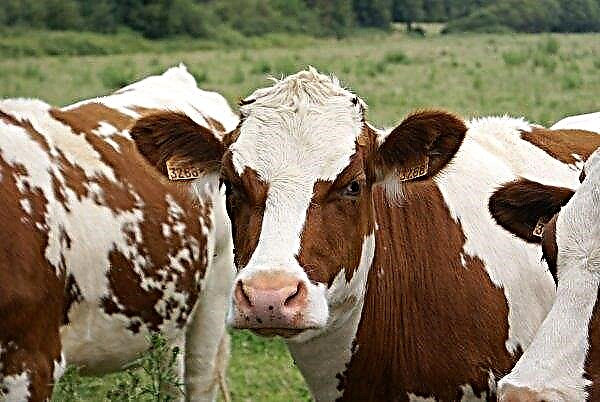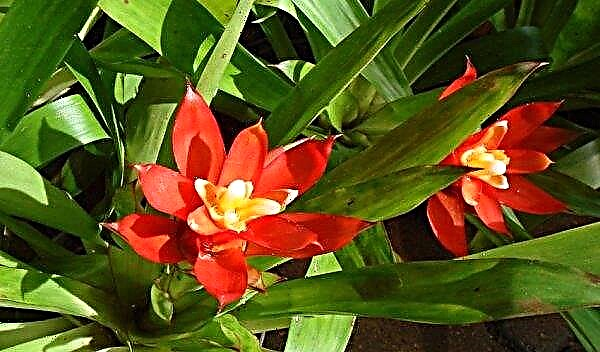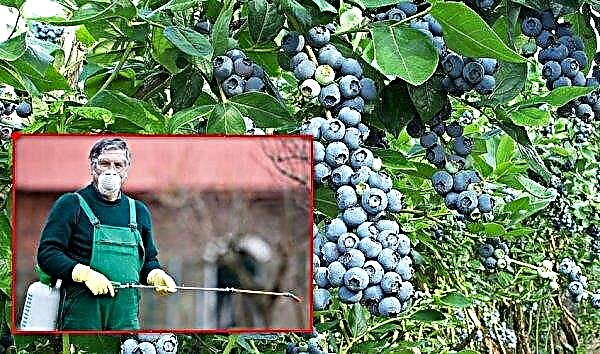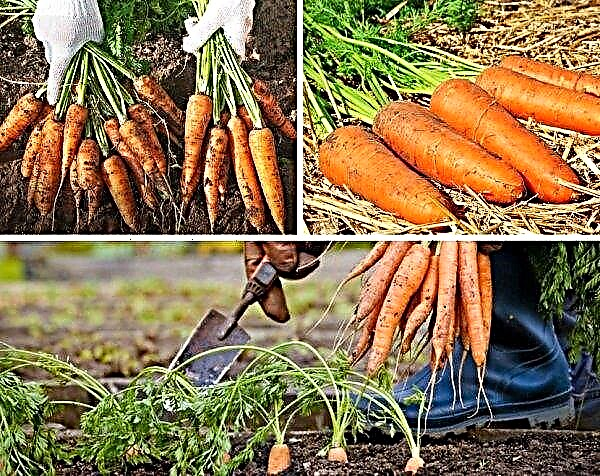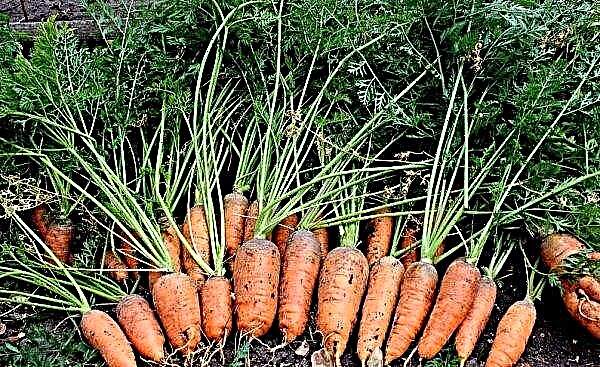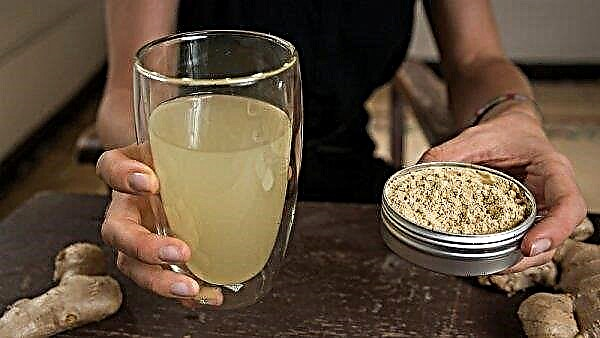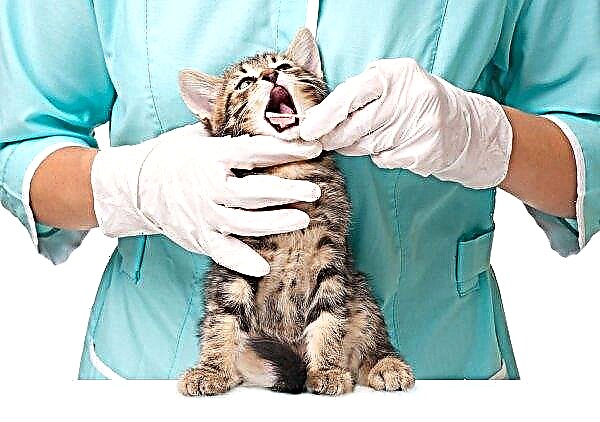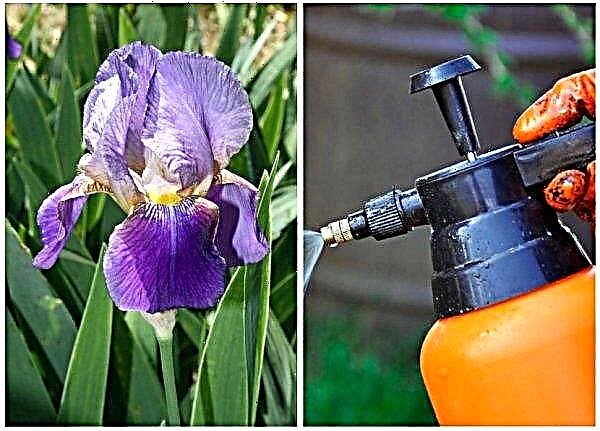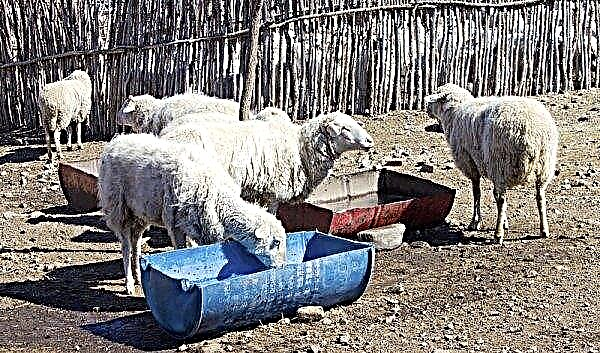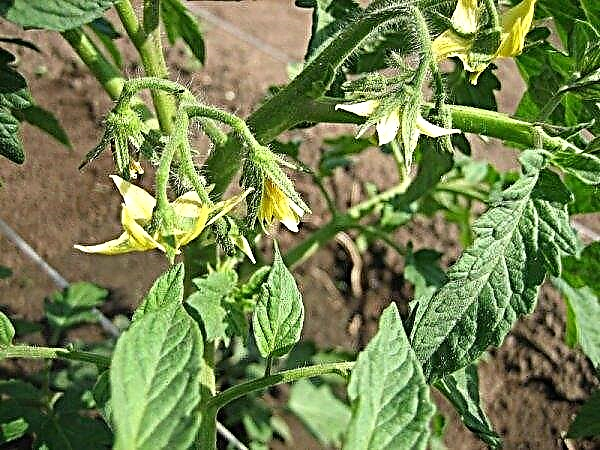Not only large farms, but also small breeders appreciated the breeding of quail for their unpretentiousness in food and maintenance, small size and high productive qualities.The quail egg is extremely useful for humans, but only on the proper nutrition of the birds depends on how well they will be carried. In this article, we will consider not only feed, but also the balance of nutrients and vitamins necessary for the growth and development of feathered pets.
Norms and rules for feeding quail
The rules for compiling a diet and feeding quail are:
- One of the most important feeding factors, which indicates its balance and benefits, is the ratio of crude protein and metabolic energy (EPO). This relationship also affects the amount of amino acids that are needed in the diet of the bird.
- Compound feeds are made from plant and animal products in such a way that the balance of nutrients, amino acids, micro and macro elements, vitamins and minerals is maintained.
- The more protein and the higher the level of amino acids, the greater the need of the bird's body for vitamins. It is very important to give vitamins separately, according to the scheme, without taking into account the feed, as the manufacturer does not always observe the correct ratio.
- Feed should not be stored for longer than a month, because with prolonged storage, vitamins and their derivatives lose their useful properties by half, or even more.
- Normalizing the presence of calcium and phosphorus in the diet, it is necessary to take into account not only their quantity, but also the proportions. For adult birds, the ratio of Ca to Ph is 3.1: 1, for chicks - 1.2: 1.
Important! Hypervitaminosis is just as dangerous as vitamin deficiency. At the same time, it slows down growth, reduces egg production, disrupts metabolism and leads to various diseases.
The norms for feeding compound feed taking into account nutrients and useful elements are presented in the table:
| Age, weeks | Compound feed, g | Exchange energy, kcal | Crude protein | Calcium | Phosphorus | Sodium |
| Young growth | ||||||
| 1 | 4 | 12 | 1,93 | 0,19 | 0,03 | 0,01 |
| 2 | 7 | 21 | 3,58 | 0,35 | 0,06 | 0,02 |
| 3 | 13 | 40 | 1,10 | 0,11 | 0,10 | 0,04 |
| 4 | 13 | 40 | 3,58 | 0,35 | 0,10 | 0,04 |
| 5 | 16 | 44 | 2,72 | 0,40 | 0,13 | 0,05 |
| 6 | 16 | 44 | 2,72 | 0,40 | 0,13 | 0,05 |
| Quail | ||||||
| 7 | 28 | 46 | 3,36 | 0,45 | 0,11 | 0,05 |
| 8 | 28 | 49 | 3,57 | 0,48 | 0,12 | 0,05 |
| 9 | 28 | 49 | 3,57 | 0,48 | 0,12 | 0,05 |
| 10 and older | 28 | 70 | 5,04 | 0,67 | 0,17 | 0,07 |
Allowed Feed
When giving birds industrial feed, remember that they are concentrated. The packaging always indicates the composition and concentration of substances.
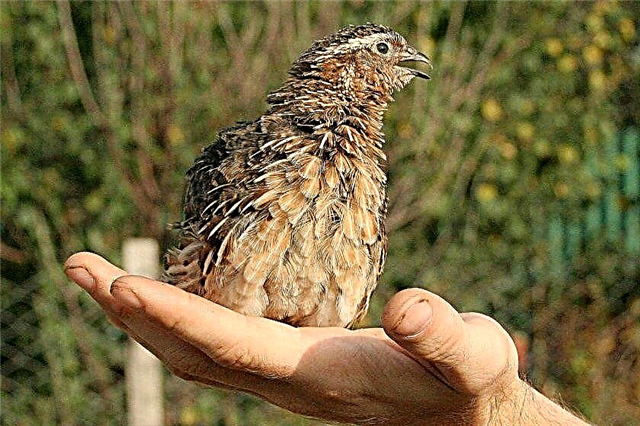
Complete feed for quail in percentage terms (%) is as follows:
| Ingredient | Young growth | Adult bird |
| Cereals / legumes | 45–50 | 50–55 |
| Cake, meal | 20–30 | 20–30 |
| Animal feed | 10–15 | 4–8 |
| Fodder yeast | 6–8 | 3–6 |
| Grass flour | 3–5 | 3–5 |
| Mineral feed | 1–2 | 5–6 |
| Feed fat | 0–2 | 0–2 |
Industrial feed:
- PC-5 (corn grain, sunflower meal, soy products, wheat grain, fish flour, animal fat). The composition contains mineral additives: sodium chloride, calcium carbonate, phosphates (5%). The protein in this mixture is 35%, cereal in the composition is present at 60%. The daily norm is 0.03 kg per adult bird.
- PC-1, PC-2 (corn and wheat grain, soybean waste, bone meal; mineral additives - sodium chloride, calcium carbonate). PK-1 is characterized by the presence of barley or bran. The daily norm is 0.027 kg per adult.
- PC-2.2, PC-4, PC-6. In the composition of about 60% of grain in equal shares (barley, wheat, corn). The protein represented by fishmeal, yeast and lysine is 30%. Mineral additives (calcium carbonate, sodium chloride and phosphates) - 5%. May be present in the composition of bran and shellfish.
Important! Carefully study the packaging, so as not to confuse balanced feed with premixes, which are expensive, but are not good nutrition.
Food can be prepared independently, guided by general recommendations. For beginners, it is best to use the already developed composition, and to postpone experiments until there is enough experience. Keep in mind that completely abandoning industrial feed is still undesirable.
Standard composition of wet food (mixers):
- cereals (crushed);
- vegetables;
- fruits;
- vegetable cleaning;
- other food waste.

An approximate calculator of self-cooking food per one bird for a period of 1.5 months (in dry form):
- corn grain - 500 g;
- barley - 150 g;
- bone meal - 1 tsp;
- unrefined vegetable oil - 1 tbsp. l .;
- mineral additives (shells, chalk, salt) - one pinch each.
The composition of feed produced in-house is very diverse, it is only important to properly maintain the balance of vitamins and minerals and check with the nutrient ratio calculator. The feed mixture is always three-component and includes plant substances, minerals and animal products.
Once a week, birds from a month and older are given gravel, pouring it over the feed. This is necessary for better mechanical processing of food. Gravel enters the muscular stomach and helps better absorption of nutrients. The size of the fractions depends on the age of the bird and is only a few millimeters.

Quail is very useful to feed cottage cheese and yogurt, these products belong to animals and are also necessary for full development. Some farmers, keeping the farm in closed conditions, feed birds with maggot and earthworms in order to bring their diet closer to natural.
How to make a diet for quail
Since nutrition depends on the age of the bird, as well as the goals that the breeder pursues, the norms for compiling the diet and feed consumption are slightly different. There are several periods in the life of a quail when the diet changes dramatically:
- first week of life;
- 14–28 days;
- young growth of 35–42 days old.
At the age of 42 days, the bird is considered already an adult and now its nutrition depends on the destination (laying hen, meat, etc.). Quails need to be fed regularly, following the schedule, as the birds get used to the regimen. Three meals a day, the most satisfying feeds are given in the evening. An approximate diet of adult quail:
- grain feed (about 7 g per day per head);
- legumes boiled and crushed in a blender;
- cabbage leaves;
- raw chopped carrots;
- boiled potatoes;
- flour worms;
- minced meat or fish;
- shredded grass.
This diet can be supplemented or completely replaced with compound feed.
In the summer heat, birds save energy and, therefore, eat less. Thus, the amount of feed per head must be adjusted. If there are wet feeds (mixers) in the diet, then you need to carefully monitor their quality: in the heat, such a product spoils faster and can lead to poisoning of the bird. This is the time when it is better not to be lazy and clean the feeders every day, as well as change the water. Summer is rich in natural vitamins, so birds get fresh spinach, green salad, nettle, beet leaves and cabbage.

In winter, on the contrary, food can be added, since birds need to spend energy on heating. It is also necessary to strengthen the feed with mineral and vitamin supplements, since there is no fresh grass - a natural source of nutrients. Sprouted oats or wheat, millet, green onion feathers, dry meadow grass (clover, alfalfa, nettle) are added to the feed. In winter, water is changed every few days.
Chicks
Young individuals are fed from side-feeders because, due to their age, they often scatter food.
The main nuances of fattening young animals:
- Freshly hatched babies are given either mashed boiled chicken eggs or specially purchased food. But the latter option is extremely costly.
- From the second day, dietary cottage cheese is mixed in the egg (about 2 g per chick).
- If there is such an opportunity, then from the third day add finely chopped grass.
- From the third day, the number of eggs begins to gradually decline, and the curd, on the contrary, becomes larger.
- In addition to 5 times feeding, birds need to drink: warm, standing water or fresh yogurt.
- From two weeks of age, feed is introduced, which will then become the main food (or it will be grain mixtures). Feeding is 4 times a day.
- The introduction of vitamin complexes in the diet begins.
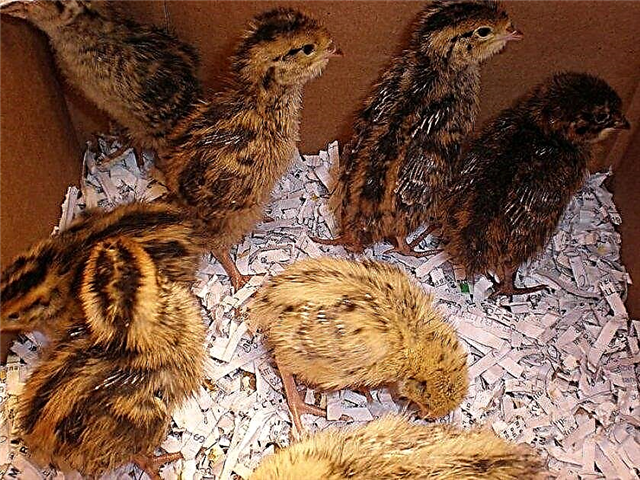
Layers
In order for the quail to rush well and be healthy, it is necessary to maintain a balance in the diet. Based on the need of the bird for certain elements (protein, protein), the rest of the feed composition is calculated in percentage terms:
- An adult female laying egg needs raw protein to maintain egg production - at least 25% of the total nutritional composition.
- If the bird does not have enough protein, then the eggs become too small and there is a risk that she will bite them herself. If there is too much protein, then we get the well-known double yolk eggs: they can be eaten, but they will not work.
- Special bird feed PK-1 is enriched with protein (contains soy, cottage cheese or boiled fish), it is often used by feed supporters.
- Those who prefer to feed hens with grain should consider that quail needs 12 g of protein per day.
- Grain feeding sometimes leads to obesity, which leads to interruption of masonry. This outcome can be avoided with the help of hopper-type feeders, where the feed is placed in the amount of the daily norm.
- Consumption of feed in the amount of 9 kg per year is considered average. But a long summer day or a cold winter makes adjustments and feed consumption is either reduced or increased.
Did you know? Quail eggs are hypoallergenic and will not harm even those who are allergic to chicken eggs.
Fattening for meat
For growing broilers, birds of special meat breeds, rejected females, males after a year, or females after the end of laying are selected:
- There is a special diet for fattening, which is introduced gradually to avoid diseases and even death of birds.
- Selected individuals are put in cages in a shaded area. Females and males are kept separately from each other.
- The diet is standard, but with a higher content of corn grain and fat for quick weight gain.
- There is also a special feed for broilers, to which boiled peas are added (20% of the total amount of feed).
- A few days get used to the new quail diet, during which they are given 50/50 of the old feed and new.
- A well-fed bird weighs at least 160 g.
- Fish products, coniferous flour, onion and garlic feathers are excluded from the diet of fattening individuals, since these products adversely affect the quality of meat.

When fattening, the main thing is not the amount of food, but the saturation with natural fats. Otherwise, the fat layer will grow, and the quality of the meat will significantly decrease.
Important! It is recommended to periodically give the quail chopped carrots. This improves the presentation of the meat.
For the parent herd
For breeding, birds of about the same age and weight, with the same characteristics, of the same breed are selected. For feeding, compound feed or mixtures of our own manufacture are used. The daily norm for females is up to 30 g, for males - 18 g. Be sure to add vitamins and minerals, even if the bird eats compound feed.
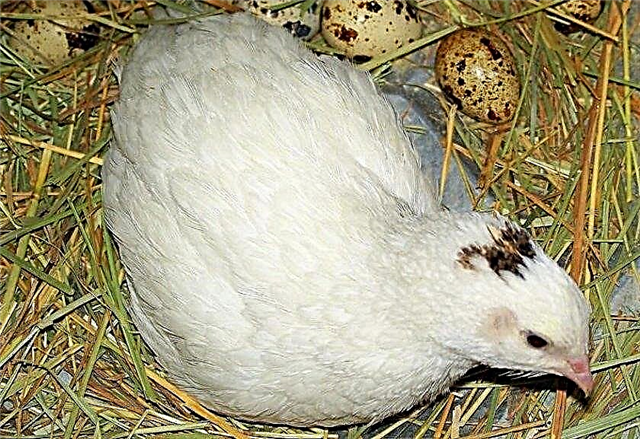
Homemade food must have in its composition:
- beets (sugar, vitamins, minerals);
- carrots (carotene, vitamin A);
- cabbage (calcium, vitamin B, amino acids);
- potatoes (starch, energy value).
Useful minerals include chalk, shell rock, and eggshell. The last before use, you need to boil to kill possible microbes. Yeast is also needed, as carriers of beneficial acids (nicotinic, pantothenic) and easily digestible protein.
Animal products, such as cottage cheese, yogurt, egg white, are needed for the full development of quails and their offspring. Vitamins are found in oilcake, herbs and grass meal.
Did you know? It is believed that a quail egg successfully replaces Viagra. With regular use, medication will not be needed.
What not to feed quail
Quails are strongly not recommended to give:
- various wastes from your table that are not listed in the lists of useful ones (cuts of sausage, soured yoghurts, etc.);
- potato and tomato tops;
- parsley, celery, sorrel;
- buckwheat and rye;
- water in which potatoes were cooked (for birds - this is poison);
- buttercups.

Signs of improper feeding
If you feed the quails correctly, then the eggs have a strong shell, and the bird droppings are dense, dark, with white patches. Birds gain weight well, do not lose egg production. If the power is wrong, then:
- liquid droppings, greenish, blood impurity is possible, yellow droppings mean excess carbohydrates and lack of protein;
- the eggshell is thinning;
- the bird is gaining weight poorly;
- laying hens cease to lay eggs;
- delays in growth and development appear, feathers become brittle (lack of lysine);
- anemia occurs and appetite deteriorates (lack of methionine);
- feathers fall out (lack of cystine).

Quail are very resistant to infections and have strong immunity, but poor nutrition undermines their health and reduces their resistance to disease.
Basic content rules
When content quails should be aware of the basic rules:
- Wet food can not be left in the feeders for a long time (more than 2 hours).
- It is necessary to regularly change the water. It should be at room temperature.
- It is important to monitor the purity of the cells and remove the droppings on time.
- Drinking bowls are best made remote to facilitate their care.
- Feeders can be installed outside the cage, which eliminates the spread of food: birds simply stick their heads into the grate and eat.
- At any age, birds carry out quality control of fattening: the herd is weighed in a group or random individuals are selected. Then check the weight gain table.
Quail very unpretentious pets, who also eat little. Minimal care, implying cleanliness and timely feeding, will allow you to achieve excellent results in breeding this bird. If you pay due attention to making the right diet, then fresh eggs and healthy meat will always be on your table.

